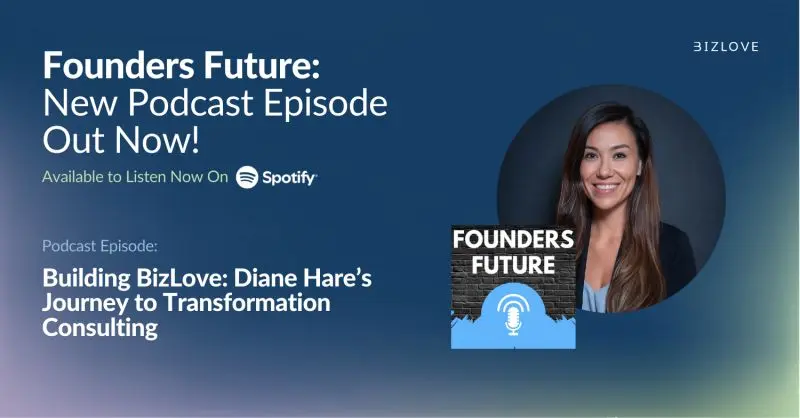Your AI Isn’t Broken – It’s Just Lonely
Why A.I. adoption is more about human emotion than it is about technology
From my early days in the military to fast-paced, deadline-driven consulting projects, one lesson has stuck with me: the right partner changes everything. I still remember a mission where our technology system failed mid-operation. It wasn’t the gear that got us through, it was the trust and quick thinking between teammates who had trained, failed, and grown together. Years later, that same principle showed up again, this time during a private equity due diligence sprint at my former consulting firm. We were evaluating a complex software business with limited data, a tight timeline and decision-makers across multiple geographies. What got us over the finish line? A team that moved in sync, challenged each other, and shared the same sense of urgency. No matter how difficult the mission or what organization you are supporting, real progress happens when you can lean on the people beside you, leverage your collective strengths, and move forward together.
That same principle is now being tested as organizations race to integrate artificial intelligence across their business. While the headlines tend to focus on breakthroughs in the models or tools, what gets less attention is that most A.I. efforts stall not because of the technology, but because people aren’t aligned to use it.
A.I. adoption isn’t stalling because the tech doesn’t work—it’s stalling because companies aren’t built or prepared to absorb the changes. No one is doubting that these systems are smart, and the use cases are clear. But the value often lags between strategy and execution. So, what separates A.I. as a trend from a true ROI generator? Internal alignment and buy-in. When employees don’t understand why it is important or how to leverage it, they disengage. And when they choose not to interact, adoption lags, workflows break, and ROI is not realized. Real performance gains like cost savings or faster decision-making only happen when people inside the organization are ready to engage with the technology.
A.I. is being adopted everywhere, but meaningful application is still rare. The companies that can look beyond the hype are focused on something deeper: using A.I. to unlock clarity and create long-term value. This matters most for the science and tech-driven organizations like the ones we serve—companies that must evolve constantly just to stay competitive. The truth is, they don’t need more tech. They need the right partners who can bridge strategy and systems, and help turn transformation into something real and lasting.
Companies like Duolingo, a gamified language learning platform, offer compelling proof points for the importance of a clear strategy. We’ve all asked ourselves at some point: What language should I learn next? Chances are, you’ve downloaded or interacted with Duolingo or with a similar language-teaching software at some point. By embedding generative A.I. directly into the user experience—not just as a background improvement—they’ve reimagined language learning while preserving their brand voice and educational standards. The result? A more personalized, engaging platform that strengthens user retention, deepens brand loyalty, and sets them apart in a crowded market. This isn’t just the adoption of new technology—it’s reinvention. That’s the kind of impact A.I. partnerships should be aspiring to help create.
Technology is only one piece of the puzzle—you also need to align strategy, operations and culture to see transformative results. This is especially true when it comes to agentic A.I., which has the potential to free up human talent, make organizations execute faster, and enable smarter decisions. Agentic A.I. is a big step forward from the kind of A.I. most people are used to. Think of traditional A.I. like a helpful robot that waits for instructions – you can ask it to play a song, write an email, or summarize a report, and it does just that. But it won’t do anything unless you tell it to.
Agentic A.I. is different.
It’s like having a teammate who understands your goals and can take action on their own. Instead of waiting for directions, it can plan, make decisions, and take steps to help you get things done, even in complex or changing situations. It’s not just a tool, it’s a system that takes action. This shift—from passive helper to proactive doer—is opening new possibilities for how work gets done. But it also means we have to be thoughtful about how we use the technology. The benefits only come to life when people trust the system and are ready to collaborate with it. If your teams aren’t ready, the technology simply won’t land.
At BizLove, we recognize that technology's effectiveness is linked directly to the people and processes surrounding it. Our role is to ensure that this technology doesn't merely automate tasks but aligns with human purpose. We focus on embedding these systems within organizational cultures, ensuring they enhance human capabilities rather than replace them. By doing so, we help organizations adopt agentic A.I. that allows them to stay true to their people, values and goals for the future of their organizations.
But alignment does not happen on its own. Many organizations face real human hurdles when rolling out any new piece of technology: fear of being replaced, confusion around ROI, or a simple lack of internal readiness on how to use it. That is why adoption isn’t just a technical process; it is an emotional one tied to real people.
Deposco is a supply chain software system that helps retailers, brands and distributors optimize fulfillment operations. In a study conducted by the company, Deposco identified a warehouse director who was hesitant to adopt A.I. tools because he felt they undercut his decades of experience. But once he saw how the system could improve his judgment by offering insights and recommendations he could act on, he became one of its biggest champions. That shift didn’t just impact his perspective; it enabled faster decision-making, improved team morale, and fostered a culture that embraced innovation. In an industry where operational efficiency drives margin, that kind of human alignment is a competitive advantage.
That belief and shift doesn’t happen by accident. It takes trust. Transparency. And a process that centers people at every step. At BizLove, we believe the future of work isn’t just being built—it’s being felt. What sets our consulting firm apart is our ability to walk alongside leaders and teams through the messy middle of reinvention, where fear of the unknown and resistance are at their peak. We don’t simply drop a solution and walk away. We stay to build the cultural support, language, rituals and behaviors that help to create new ways of working. Real reinvention doesn’t come from new technology, it comes from people choosing to show up differently together.
Imagine your organization is rolling out a global rebrand. It’s not just about updating logos or launching a campaign. It’s about aligning every region, every team, and every customer touchpoint with a new story. The technology tools can support the shift, but it’s the people who bring it to life. And if they’re not aligned, it shows. That’s how we see the future of A.I. in business.
BizLove has forged a strategic partnership with Y Carrot—a team of data scientists with expertise in generative AI, multi-agent systems, and retrieval-augmented generation—to give clients the integrated team they know they need but struggle to find in today’s marketplace. Together, we help organizations not only identify their next use case and technical solution, but also plan for the internal enablement, roll-out, and adoption required to bring their teams along with them to fully realize the value of their investment.
We’re looking for bold, people-first teams who are excited to pilot A.I. in their functional teams or enterprise-wide. Because A.I. deployment isn’t about plugging something into an existing structure and waiting for it to deliver value. It’s about bringing the right people together, equipping them with the tools to succeed, and integrating technology that drives real results. Curious what A.I. pilot deployment and adoption could look like in your organization? We’d love to help you find out.



